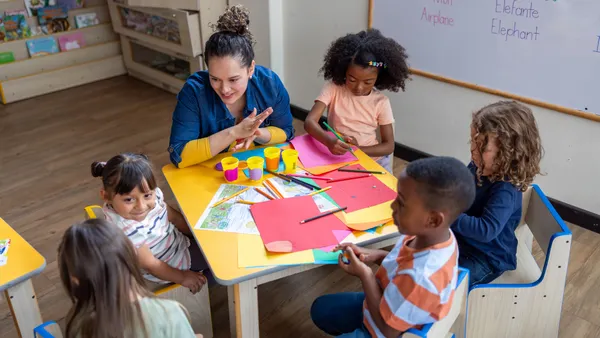Dive Brief:
- Peter Siegel believes building connections among students is crucial to fostering engaged learning, and arts and music classes can be at the forefront of supporting these bonds, the music teacher at Symonds Elementary School in Keene, New Hampshire, writes for Edutopia.
- Singing songs together as a class — or even as an entire school — through Zoom or other videoconferencing tools, is one way to build community, Siegel writes. Educators can also encourage students to compose songs, record a dance routine, or film themselves performing and then share these videos with peers.
- All-school song books are also a great resource that ensures all students can participate in virtual singalongs. And an art project can help connect students with their physical schools, such as painting rocks that one day can be placed in a school garden. In these ways, art can support connection and community even through remote learning.
Dive Insight:
Maintaining a sense of school community has been difficult this school year with some students learning remotely and others coming to class, many with staggered or hybrid schedules. Educators can, however, support school community, even through virtual learning by tapping into arts programming.
While schools may be making difficult choices this year on where to place resources, arts programming can help to keep students engaged in school, notes Edutopia. And there are myriad ways to bring these classes to K-12 learners, even if they can’t have access to a campus-based art studio.
Impressionism, for example, can be taught with online resources and just a few coffee filters and some acrylic paint. Teachers can also take advantage of cross-curriculum opportunities by focusing on female artists who were involved in social, political and cultural change. The National Art Education Association keeps a hefty list of links and online art lessons that educators can tap for K-12 classes.
Of course, certain art classes, such as photography courses that require access to a dark room and perhaps developing materials, may be more difficult to offer with students at home. Some educators are moving away from less hands-on remote assignments to more conceptual lessons, allowing them to ensure students have access to an arts education even if they remain in a distance learning environment.





 Dive Awards
Dive Awards



